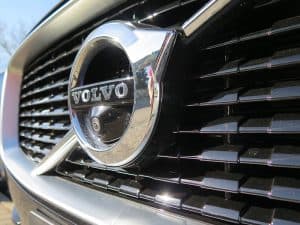Click here to get this post in PDF
 For over 72 years, Swedish car manufacturer Volvo had been the epitome of Scandinavian practicality.
For over 72 years, Swedish car manufacturer Volvo had been the epitome of Scandinavian practicality.
Way back in 1920s, founders Gustaf Larson and Assar Gabrielsson sat down to design a line of vehicles that would be able to cope with the country’s tough winter climate, terrible roads and variable terrain.
“Swedish steel was good but Swedish roads were terrible,” Gabrielsson would later write, describing their motivations behind creating the brand.
Volvo was born as a practical solution to a practical problem.
Solid, stubborn and stoic, Volvos were built to last. The brand was never really about sex appeal. Instead, its vehicles were practical, incredibly safe, and constantly innovating.
It’s not really surprising that they soon developed a cult following, becoming known as a car for a particular type of person. The type of person who takes a packed lunch everywhere and always has an emergency umbrella to hand. The sensible person. The pragmatist. The Volvo driver.
The brand ticked along respectably for the next few decades but blazing success obviously never lasts forever. Over the years, questions began to be asked in the Volvo boardroom about the long-term profitability of the brand. Yes, it was making a profit but was that profit big enough.
In 1999 something disastrous happened. AB Volvo, the parent company of Volvo, sold the brand to Ford.
A cautionary tale: the Ford years
In 1999, AB Volvo sold the brand and its car business to Ford for $6.45 billion and that’s when the brand began to start rolling downhill.
For reasons that remain fairly inexplicable, Ford decided to completely reinvent the Volvo. Volvos would no longer be reliable steel workhorse. Instead, they would be luxury cars driven by people who fancied a change from Audi, Mercedes-Benz and BMW.
The tried and tested old automotive platforms that were the essential element of the Volvo’s appeal and its USP was thrown on the scrapheap and replaced with shared platforms from Ford, Mazda and Land Rover. A crucial part of Volvo’s DNA had been altered beyond recognition.
Now, none of this would be particularly unforgivable if Volvo’s new rhetoric matched what they were offering, but it didn’t.
For example, the 2006 Volvo C30 was built using the Ford C1 platform — the same platform as the Ford Focus. Buyers naturally questioned whether a car built on a platform like that could be considered luxury at all.
Now, not every Volvo from this time period was a stinker. Most of those based on the old Volvo platform was actually okay. But most consumers weren’t really falling for the new brand positioning, mainly because there was little that could be considered luxury about the Volvo brand — apart from some slick marketing telling you it now was.
By 2006, It was clear that Ford’s rebranding strategy for Volvo wasn’t really working. Profits continued to slump and the loyal Volvo drivers were leaving in drove.
Cue the 2008 global financial crisis.
When the North American car industry imploded in its aftermath, Ford palmed off the sickly Volvo brand onto Chinese auto start-up Geely.
Thankfully, that’s where things begin to turn around.
Key takeaway: Your brand message is pointless if it’s got no substance to it– eg. you can’t tell people that your brand’s umbrella will keep you dry if it’s got holes in it. Skin-deep messages are worthless. Brand messages need to be reflected in everything you do and offer.
The Geely Re-brand
Geely had been quietly observing Ford’s failed re-positioning of Volvo before they bought the brand. They knew that you couldn’t just jack up the price of a car and then call it luxury. They knew that a rebrand had to be based on the actual product on offer.
The Chinese company’s approach was to jettison all the Frankenstein models created in the Ford era and to go back to basics. Geely focused on the key things that made the brand so popular with particular drivers and pumped money into new R&D initiatives. Importantly though, they didn’t completely abandon the luxury idea. Instead, they thought about it carefully and tried a different tactic.
The result was new offerings like the second gen XC90 that channelled the best parts of past Volvo models whilst gently adding luxury elements.
In short, Geely had managed to turn around the fortunes of a troubled brand through a well-thought-out rebrand.
Will Craig, writing for LeaseFetcher, thinks that the difference between the two approaches is “stark”. He says, “unfortunately, the cars from the Ford era cars seem confused and they feel a lot like rebadged Fords. But since Geely took over the brand, Volvo is creating cars that are close to the original aims of the brand that made it so popular with drivers.”
The re-brand managed to achieve the seemingly impossible– it revived the fortunes of a brand and repositioned it at the same time.
Key takeaway: Your brand is rooted in real products and real services. Don’t invent features that you can’t back up. Focus on the things that make your brand special and own them.
You may also like: The Power of Brand Loyalty
About the Author
Tom Butcher is a freelance writer who recently escaped the world of print journalism. He covers a wide range of topics, including finance, business and motoring. You can follow his (new) Twitter feed here.
